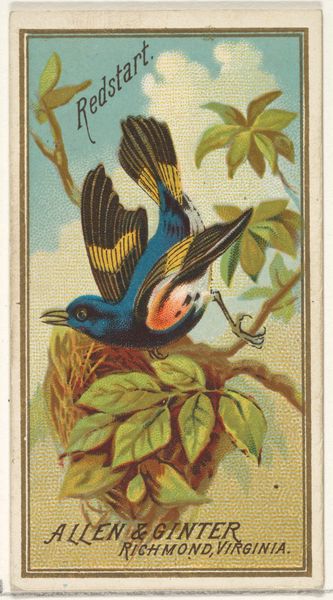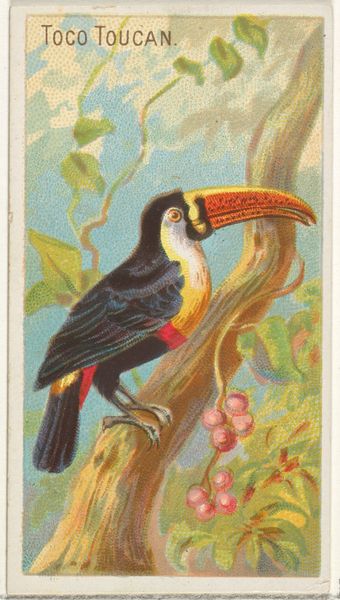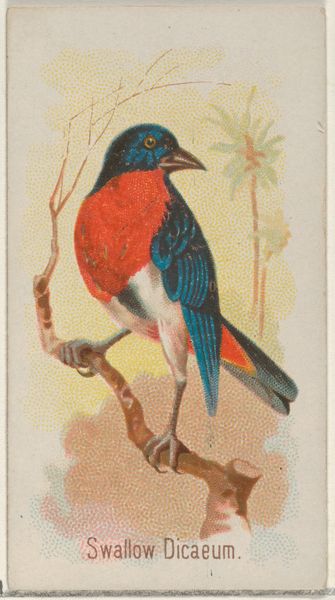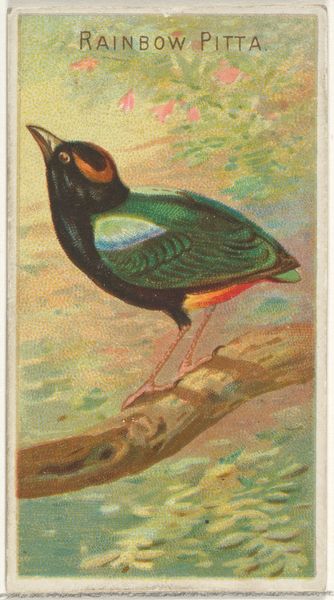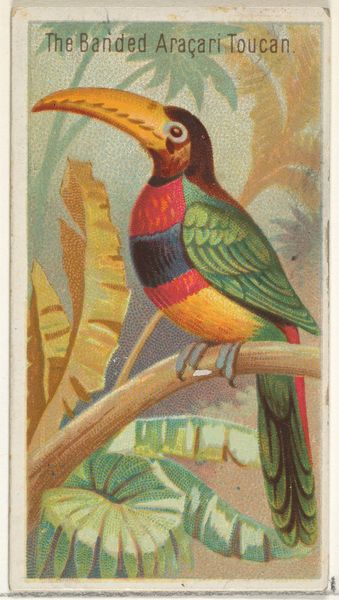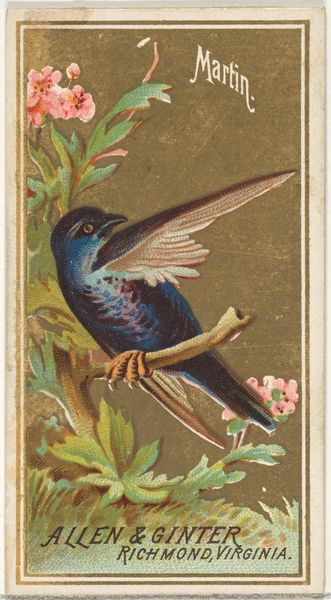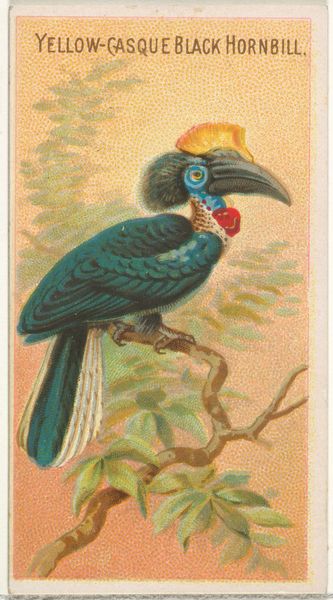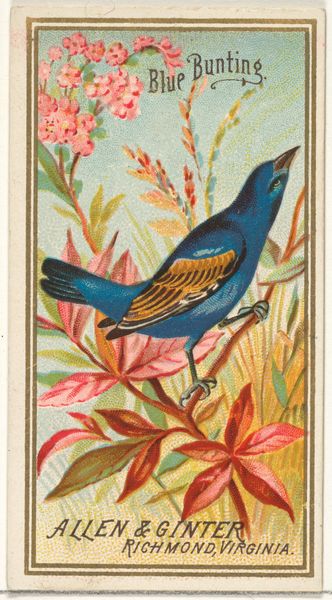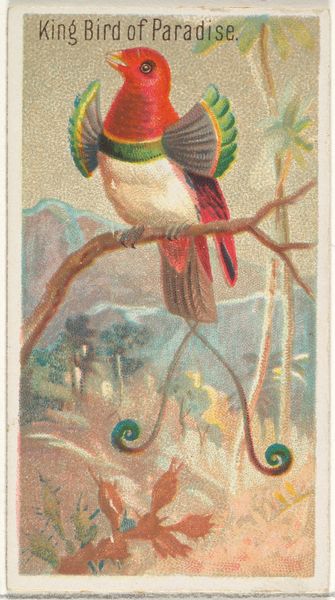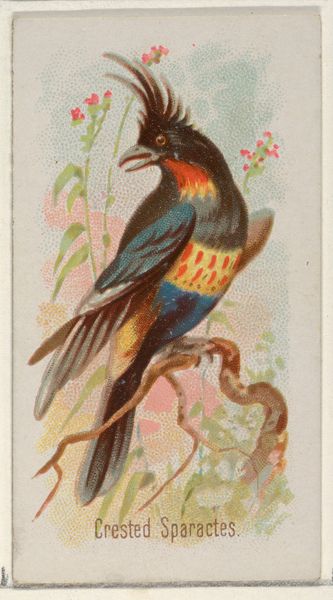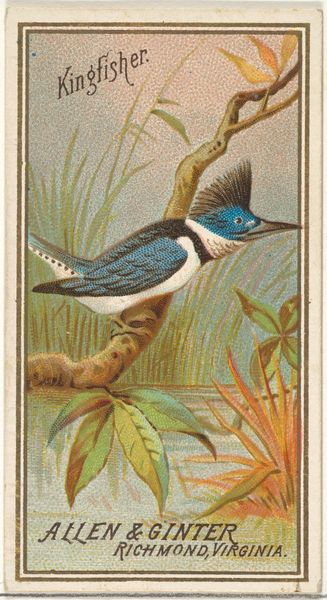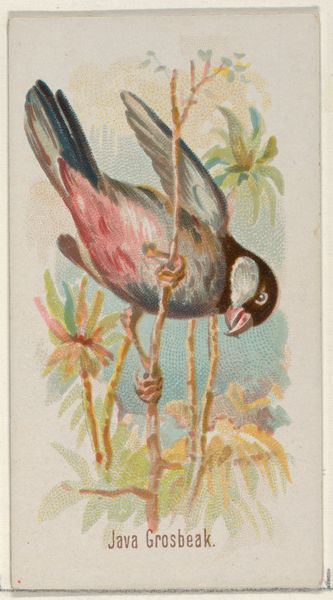
Paradise Tanager, from the Birds of the Tropics series (N5) for Allen & Ginter Cigarettes Brands 1889
0:00
0:00
drawing, coloured-pencil, print, watercolor
#
drawing
#
coloured-pencil
#
water colours
# print
#
bird
#
watercolor
#
coloured pencil
#
watercolour illustration
#
watercolor
Dimensions: Sheet: 2 3/4 x 1 1/2 in. (7 x 3.8 cm)
Copyright: Public Domain
Curator: This chromolithograph, titled "Paradise Tanager," comes to us from Allen & Ginter’s "Birds of the Tropics" series, printed around 1889. Isn't it charming? Editor: It's… tiny. It's almost aggressively cheerful. I'm instantly reminded of the exploitation inherent in romanticizing the 'exotic' while conveniently ignoring colonial realities. Curator: Well, yes, I suppose it’s undeniably a product of its time. But consider the artistry! Look at the precision of the line work in those feathers, rendered through colored pencils and watercolor. It's clearly striving for accurate representation. Editor: "Accurate" according to whom? The selective framing matters. Who gets to define “paradise,” and at what cost? The commercial purpose – an advertisement for cigarettes – adds another layer. These little cards were essentially collectibles packaged with tobacco, hooking consumers on both. Curator: Ah, but wasn’t there a democratizing element, too? These prints made art accessible to a broader public, albeit tied to a vice. It’s a strange juxtaposition—beauty peddling addiction. Editor: Democratizing? Or commodifying culture and nature? Let’s think about where these "Birds of the Tropics" actually lived. We are talking deforestation, habitat loss. This idealized bird exists in sharp contrast with what was actually happening. The advertisement feels duplicitous, masked by artistic license. Curator: I see your point. The very act of capturing and cataloging implies a kind of ownership, doesn’t it? Yet there's also a palpable sense of wonder, don't you think? A Victorian-era attempt to understand and share the world's biodiversity. I am drawn to the riotous colours. Editor: It’s a packaged colonial gaze, dressed up as art. The bird itself, frozen on that branch, becomes a symbol of that constraint, a captured beauty for mass consumption. The bright colours deflect the unpleasant undercurrents of it. Curator: So, a complicated little artwork. Simultaneously delightful and deeply problematic, a reminder of how art can both reflect and obscure historical truths. I guess the 'paradise' isn’t quite as idyllic as it appears. Editor: Precisely. Seeing art is about acknowledging its dual nature, and confronting the ideologies that frame even the most seemingly innocuous images. It urges us to see how intertwined the appreciation of art is to its role within socio-political narratives.
Comments
No comments
Be the first to comment and join the conversation on the ultimate creative platform.
